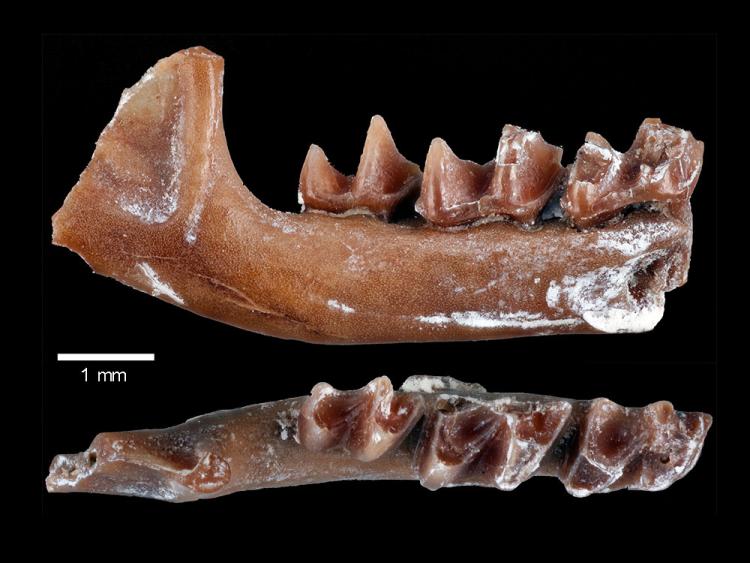
Oreotalpa is thought to be the oldest North American member of the Talpidae, a family that includes today’s moles, shrew-moles, and desmans–an insectivorous mole with a long snout! Discovered in 2008 by Dr. Jaelyn Eberle and team from the University of Colorado Museum of Natural History, Oreotalpa literally means ‘mountain mole’ (oreo = mountain; talpa = mole) and was named for its discovery in Colorado’s Rocky Mountains. The fossil was discovered in late Eocene (34-million-year-old) rocks at Florissant Fossil Beds National Monument in Colorado, famous for its giant petrified redwood stumps and fossil insects.
Oreotalpa is teensy! Each of its cheek teeth (shown on this image of the jaw) measures just one and a half mm in length! Judging by its small size and the sharp bumps (or cusps) on its teeth, Oreotalpa likely ate insects, which were abundant in Florissant, 34 million years ago. Oreotalpa’s close cousins lived in Europe and Asia during the slightly younger, early Oligocene Epoch.
Fieldwork was conducted at the Florissant Fossil Beds National Monument where the discovery of Oreotalpa was made. The National Park Service, as well as other federal land managing agencies, strives to meet the needs of scientists and the public by housing fossils using the most up-to-date curatorial standards so that future generations may study and enjoy these public resources. The CU Museum helps the National Park Service with this goal of preserving public fossils by serving as a repository. The Museum holds these public fossils in trust for the National Park Service in our collections; properly taking care of them and making them available for scientists and the public to use. The repository relationship not only gives the National Park Service a proper way to house specimens, but it also allows the Museum to achieve its mission of research, teaching, and community outreach.
Catalog Number: UCM 99553
Taxonomy: Oreotalpa florissantensis
Location: Teller Co., Colorado
Age: Eocene, Chadronian
Stratigraphy: Florissant Formation
Lloyd, K. J., and J. J. Eberle. 2008. A New Talpid from the Late Eocene of North America. Acta Palaeontologica Polonica 53:539–543.
National Park Service (for a picture of what Oreotalpa might have looked like)
